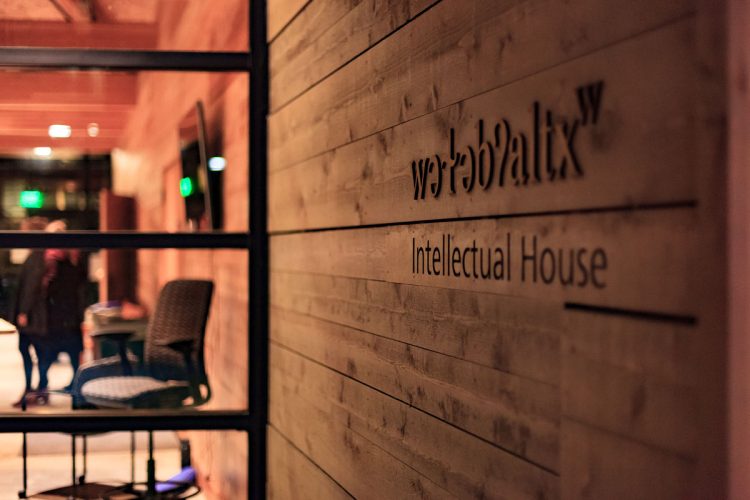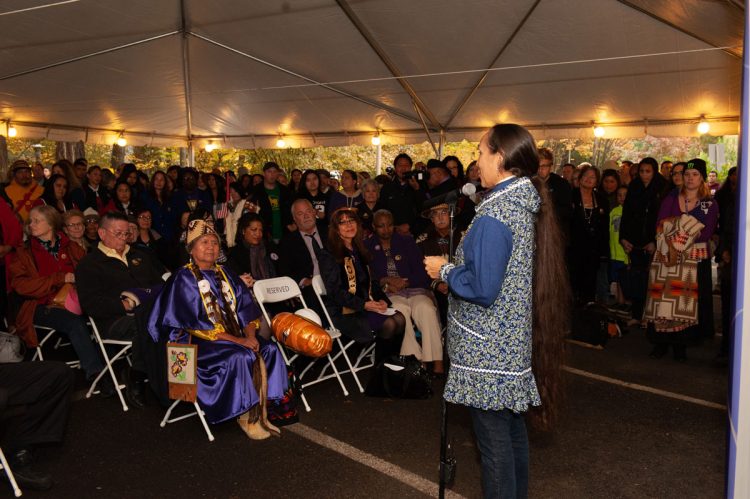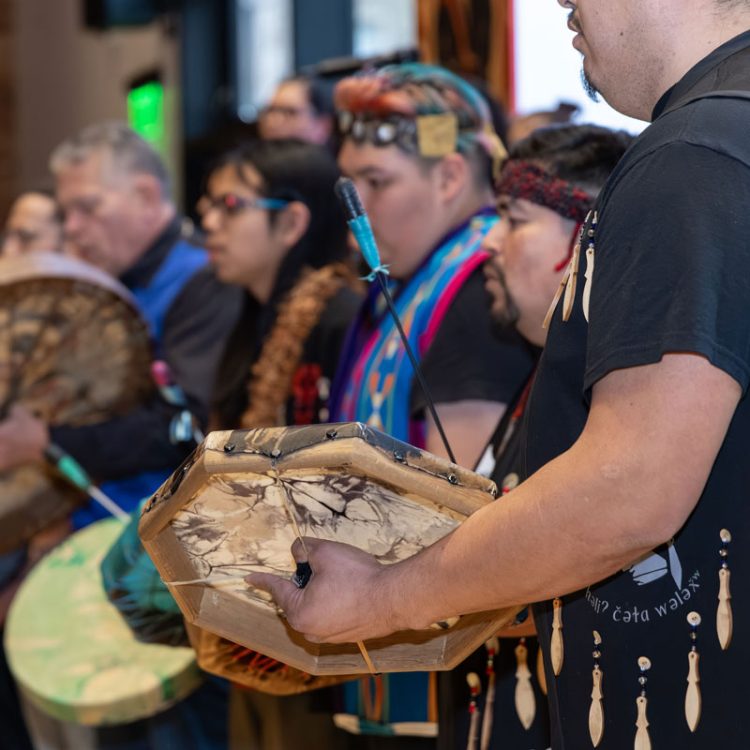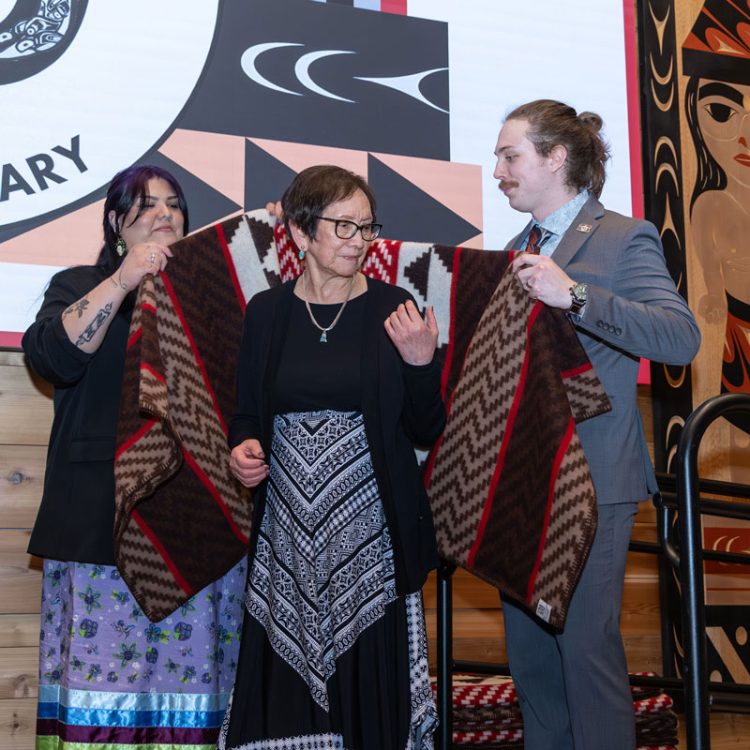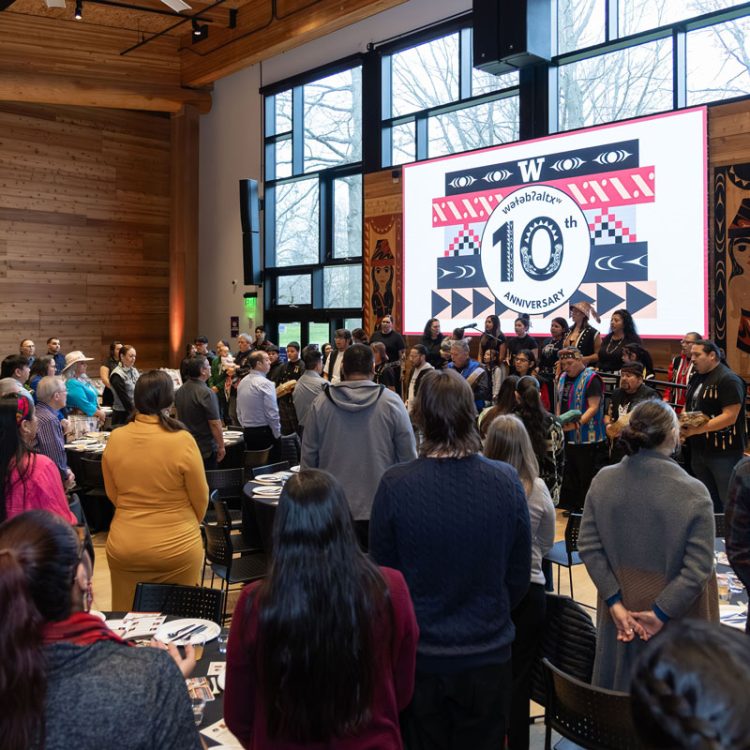A place to belong A place to belong A place to belong
wǝɫǝbʔaltxʷ – Intellectual House marks its first decade as a resource and home for Indigenous students and community at the UW.
By Shin Yu Pai | Photos by Tara Brown | Viewpoint Magazine
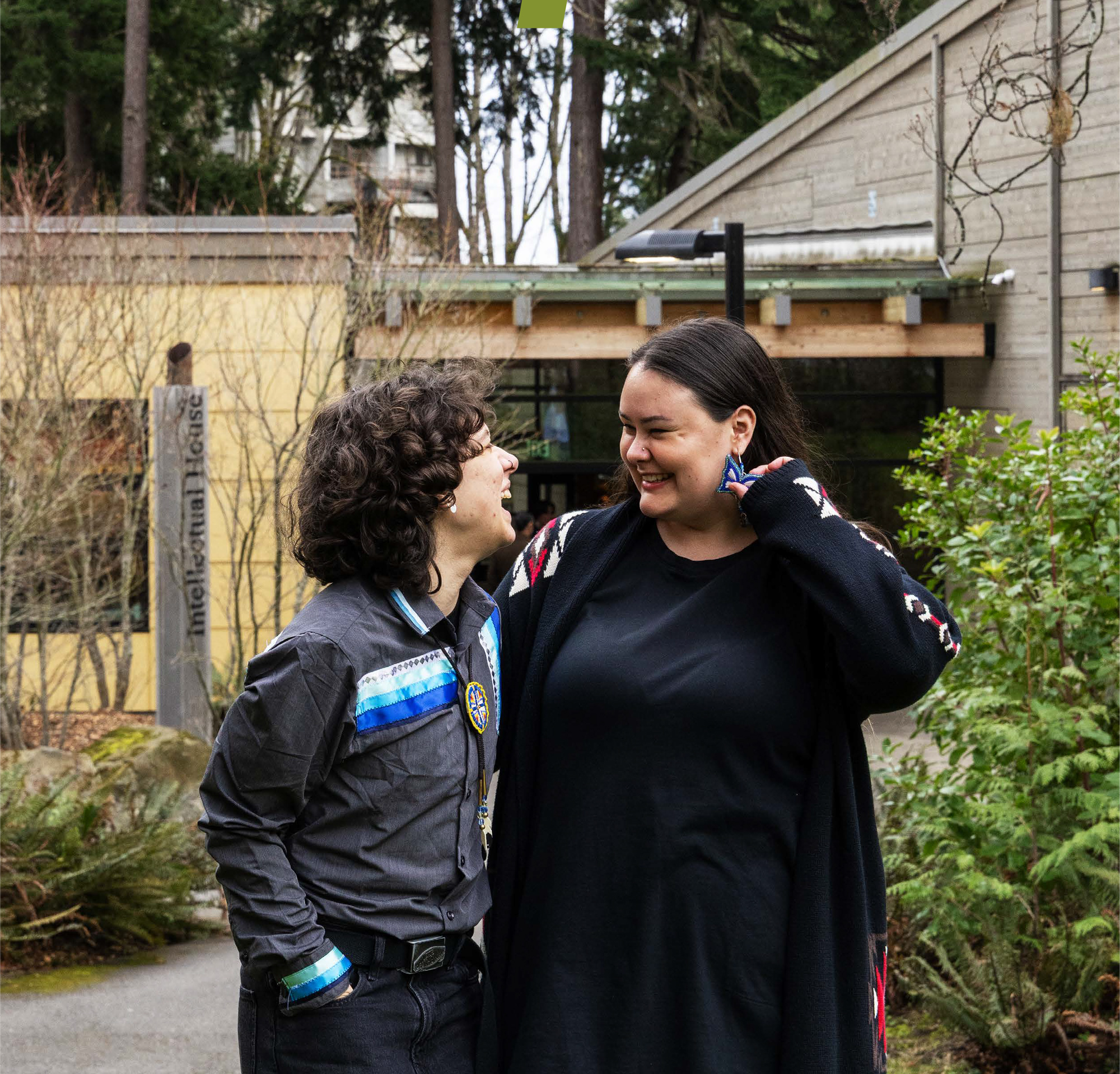
Surrounded by Collegiate Gothic-style classroom buildings from the 1940s and 50s and Brutalist residence halls from the 1960s, wǝɫǝbʔaltxʷ - Intellectual House stands as a modern testament to Coast Salish architectural traditions and cultural values. (wǝɫǝbʔaltxʷ is pronounced WESH-ehb-ALT.) Now in its 10th year, the longhouse-style facility has served as gathering place and second home to American Indian and Alaska Native students, a place where they can connect with and celebrate their cultures. It is a clear manifestation of Coast Salish and Indigenous culture on campus.
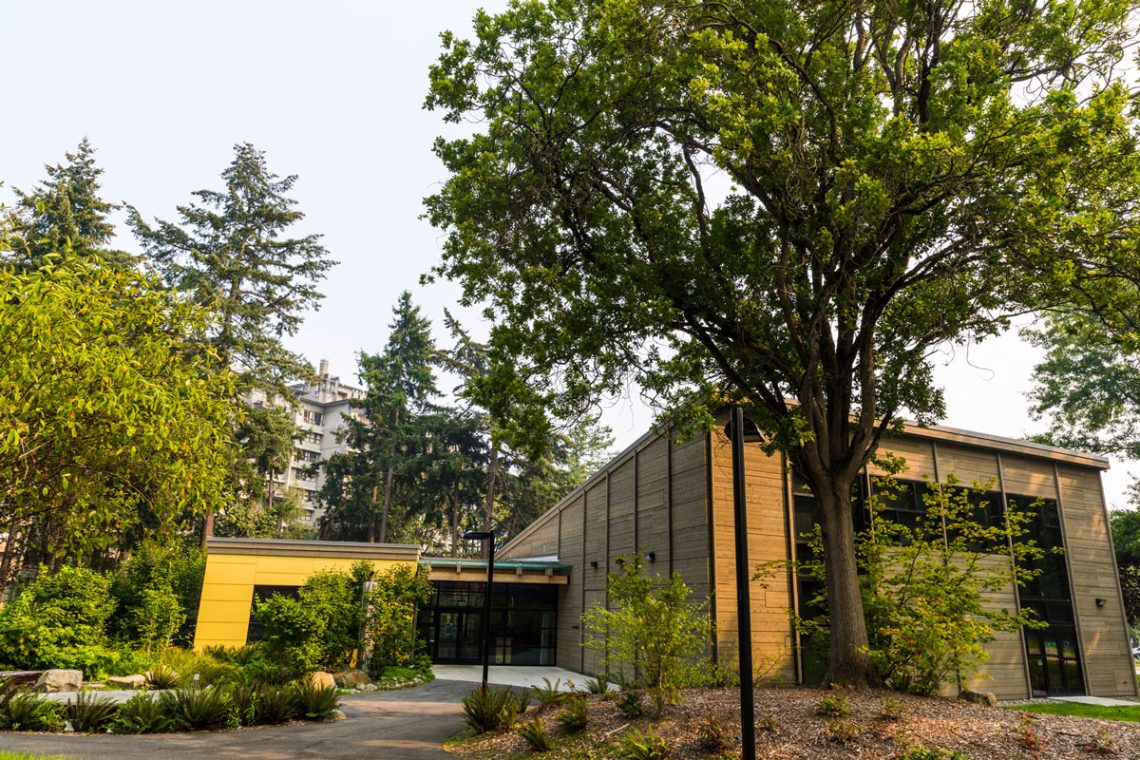
- The building’s name, wǝɫǝbʔaltxʷ, is the Lushootseed language name for “Intellectual House” and was gifted by the late Vi Hilbert (Upper Skagit), a linguist and elder.
- Polly Olsen (Yakama), ’94, speaks at the groundbreaking for wǝɫǝbʔaltxʷ – Intellectual House in 2013. The first phase of the project, a longhouse-style facility, opened in 2015.
Now the UW community is gearing up for a highly anticipated expansion: Phase 2 will complete a vision first imagined by Native students in the late 1960s. A fundraising campaign is underway.
In the first phase of the project, the UW prioritized the construction of wǝɫǝbʔaltxʷ, the gathering hall, which opened to student use and campus events in 2015. The next phase turns the focus to supporting students more fully with a dedicated Native study center.
The Phase 2 building will provide more room for community building and student support, says Chenoa Henry (Tulalip), ’17, who became director of the Intellectual House in 2022. Further centralizing wǝɫǝbʔaltxʷ as a hub for Native resources, Phase 2 will provide community and learning spaces as well as room for additional staff to support more programs. The facility will also feature a multi-generational meeting space to foster connections with tribal elders and house the mentorship program with students and community members that was built upon the success of the Yehawle peer tutoring program.
- Scenes from the 10th anniversary celebration for wǝɫǝbʔalt – Intellectual House.
- UW retiree Augustine McCaffery, ’85, ’92, ’12, was among the elders and advisers to be honored in a blanket ceremony at the 10th anniversary celebration for wǝɫǝbʔalt – Intellectual House.
- Scenes from the 10th anniversary celebration for wǝɫǝbʔalt – Intellectual House.
Henry remembers what campus felt like before the Intellectual House opened. In 2010, as an undergraduate in American Indian Studies, she struggled to find a Native community to connect with. “I didn’t know that there was a First Nations student group, or where to find it,” Henry says. After several years of not feeling a sense of community on campus, Henry left school to work for her tribe. Years later, as a graduate student at Seattle University, she accessed resources for Indigenous students that helped her value how important a sense of community is during college.
For Owen Oliver, ’21, wǝɫǝbʔaltxʷ exists as a place of spirit and connection for Indigenous students, teachers and community members. His father, the late artist Marvin Oliver, ’73, joined several other faculty and alumni in advocating for a space on campus where tradition and practice could meet academia. Along with elders including Julian Argel (Tsimshian/Haida), ’84, ’90, and Lillian Chappell, whose parents were from the Yakama, Cowlitz and Snohomish tribes, the senior Oliver had a long career at the University where he served as friend and mentor to a community of Indigenous students.
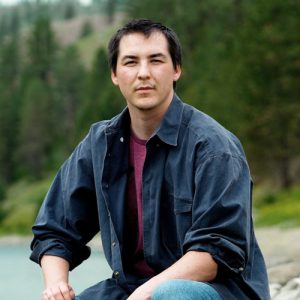
“Getting to the UW, I felt pretty alone. I came to the Intellectual House during an outreach for new Native students. I made my first friends there, then worked there. I don’t think I would have graduated without having that community and that building. … The funny thing is, this is only the first phase of the building. We’ve done all these incredible things for student faculty… what could we do with a completed project?”
Craig Hill (Spokane), ’21, Spokane Salish language teacher
“With the opening of wǝɫǝbʔaltxʷ, there was finally a place on UW’s campus to potlatch and to host others,” says Owen Oliver. “It’s a huge reason why I went to UW. I knew there was a place for me—a Coast Salish place.”
Before he graduated, Oliver created an Indigenous Walking Tour of UW. The wǝɫǝbʔalt – Intellectual House is a central landmark. Most of the original longhouses in Seattle were burned down by settlers, Oliver says. “wǝɫǝbʔaltxʷ opened 145 years after Chief Seattle’s longhouse was burned,” he adds. “I want to get across how much of a fight it was to bring a longhouse on campus, to continue to build solidarity.”
Polly Olsen (Yakama), ’94, worked with elders from around the region to help plan wǝɫǝbʔalt – Intellectual House. She says the facility illustrates the diversity of the region’s tribal communities, people who have stewarded the land for innumerable generations. Olsen, who now serves as tribal liaison for the Burke Museum of Natural History and Culture, says, “We didn’t have a place for cultural rest and connection. In academic institutions that thrive on theoretical and historical concepts from a Western perspective, not all our voices or histories are talked about.”
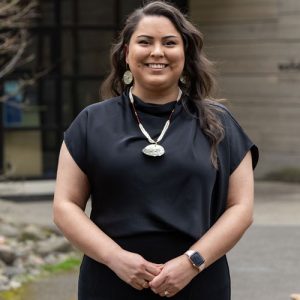
“wǝɫǝbʔaltxʷ – Intellectual House was built on a foundation of resilience, community and the unwavering belief that Indigenous students deserve a space where they can thrive. Over the past decade, this house has become more than just a building—it has become a home. A place where students find strength in culture, connection and each other.”
Chenoa Henry (Tulalip), ’17, Director of the Intellectual House
From the day wǝɫǝbʔaltxʷ – Intellectual House opened its doors, it has grown into its role as a thriving social and academic hub for the Native community at the UW. Now Henry and her team work to holistically address Native student success by providing culturally specific programming, community-based events and engaging with campus partners to facilitate services such as advising and counseling.
At present, the team hosts events that connect students to culture and community while also managing and maintaining the space for Native community events. But without room to meet the specific needs of Native students, the vision isn’t complete, Henry says.
“We have a small conference room that attempts to fulfill two roles. It’s a study area as well as a student lounge,” she says. Students need a more suitable, dedicated space to study and work on projects as a group. Their artmaking spaces also need to accommodate the making of traditional crafts and hold the equipment required to create heritage artworks through woodcarving, weaving, making ribbon skirts and beading.
 “It’s an important space for all the Native people on campus. Since the COVID-19 pandemic, we have been breathing life back into our Native community, and we are more active than we have been in a while. The longhouse and the Intellectual house is the reason some students choose to come to the UW.”
“It’s an important space for all the Native people on campus. Since the COVID-19 pandemic, we have been breathing life back into our Native community, and we are more active than we have been in a while. The longhouse and the Intellectual house is the reason some students choose to come to the UW.”
Tena Faith Bear Don’t Walk (Apsáalooke), student, co-chair of First Nations @ UW
A new community and learning room in Phase 2 will ensure opportunities for knowledge sharing led by Native staff, faculty and community members. The dedicated spaces will serve student-registered organizations like First Nations, the Yehawle peer tutoring program, academic advising, counseling and other student success programs.
While celebrating the remarkable individuals who have dedicated their time, energy and hearts to the creation and success of wǝɫǝbʔaltxʷ – Intellectual House, it is also time to look forward, Henry says. “The next phase is about deepening our impact, increasing resources and ensuring that future generations of Indigenous students have an even stronger foundation to stand on.”
